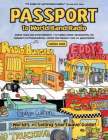 NAVTEX Reception
NAVTEX Reception
NAVTEX is a system to deliver local weather reports and navigational warnings to ships operating in coastal areas. Certain ships are required to have NAVTEX receivers as part of their mandatory equipment. These are dedicated units, and usually have lcd displays and printing ability - allowing automatic reception. These units often include special features to avoid receiving duplicate messages, and to reject messages of lesser importance.
But you can also receive NAVTEX data using a ssb capable receiver and either a hardware or software decoder to decode the audio tones into text. Tuning the receiver accurately is paramount to receive quality data, although with modern computer decoders, the audio frequencies that are sampled for data can be adjusted to match the incoming signal.
NAVTEX is broadcast worldwide on 518 kHz using a data mode called SITOR-B (amateur radio operators might recognise it as AMTOR). It's 7 unit data with forward error correction (FEC) using 100 Baud 170 Hz Frequency Shift Keying (FSK), with the centre frequency being 1700 Hz.
In Europe, 490 kHz is also used for NAVTEX, primarily to allow stations to transmit non-English messages, or for greater repetition of messages.
NAVTEX stations transmit on a four-hourly cycle, apart from urgent messages which are transmitted immediately. This allows many stations to share the same frequency, without causing undue interference. Nearly all transmissions are in English.
The service range of NAVTEX stations is generally 100 to 500 nautical miles. But with good receiving aerials, and suitable propagation, stations can be received from much further afield. For instance the East Coast of North America, the Caribbean and the Middle East are not unusual during hours of darkness.
NAVTEX stations transmit in a 10 minute slot on a 4 hourly cycle ... except for urgent messages (such as Mayday alerts and gale warnings) ... and here is a chart which shows the 4 hourly cycle.
NAVTEX stations do verify reception reports with QSL cards or letters.

